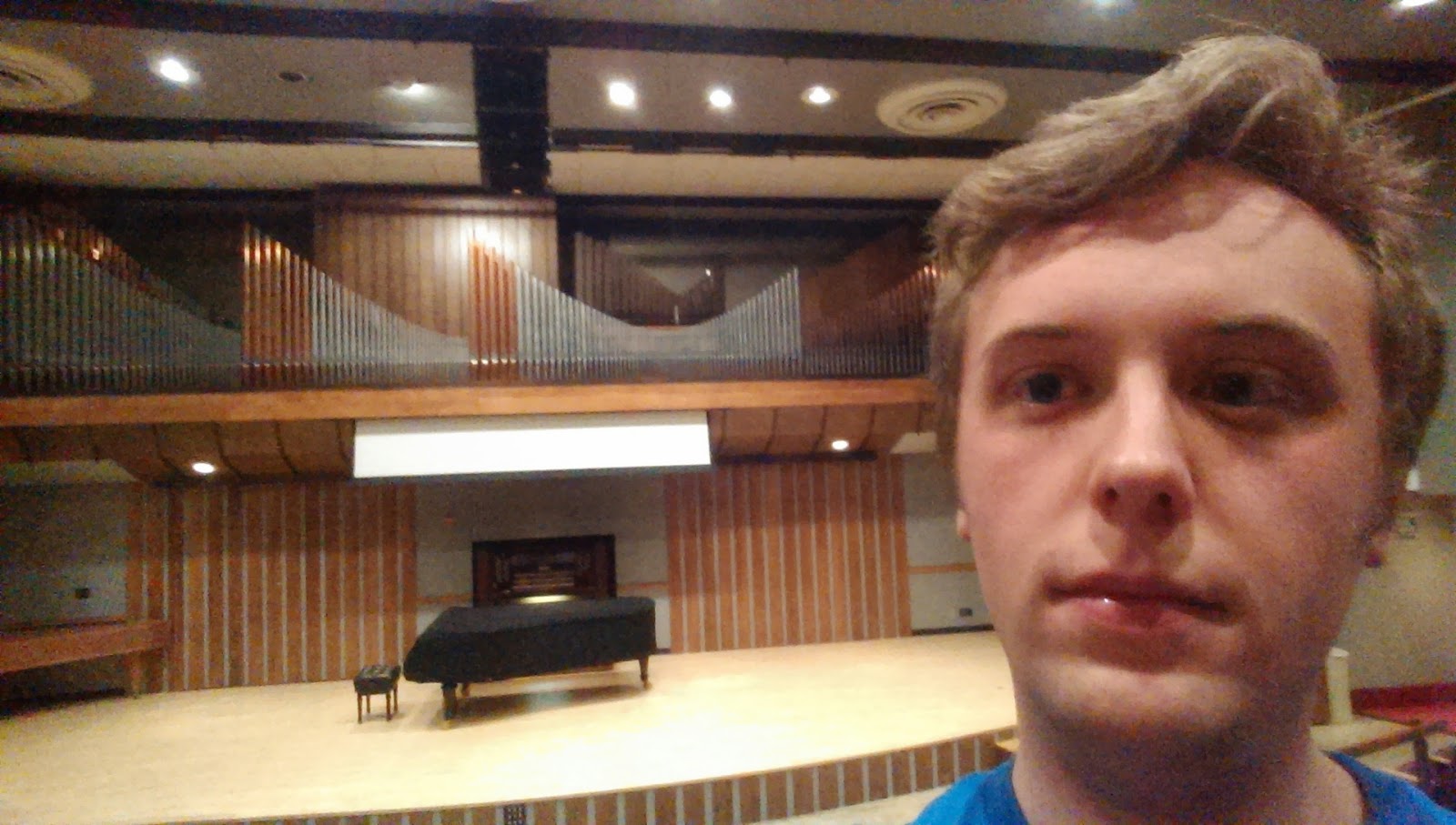This organ is so special, and I wasn't quite skilled enough to appreciate it the day I had the chance to play it. They keep it locked down most of the time, since there isn't a cover over the keys, and it's so valuable.
Here's a link to a bit of story behind this organ:
Death of the Organist
The Readers' Digest version is that the late Doug Bush, a former professor of organ at BYU and member of the Provo Central Stake Presidency pushed to have this tracker-action organ made by M. L. Bigelow & Company of American Fork, Utah ordered as the replacement to the stake's aging electronic organ in the 1980's.
A tracker action organ is basically an organ that is entirely mechanical. This is the type of organ played by Bach and Mozart, and was used before it was possible to have an electropneumatic action. Basically, all the pipes are connected to the keys by wires, and by thin pieces of wood called trackers. It's interesting, since when you activate more stops, the keys get harder to press. Also, when you couple 2 of the manuals together, or couple one or more of them to the pedals, keys go down that you aren't playing, as shown in the following video:
Toccata & Fugue in D Minor BWV 565
Most organs are electropneumatic or simply electronic, which are both similar in that when the keys are pressed, it's like pushing a button that activates a magnet or motor somewhere else in the room, which in turn opens the valve that makes the pipe(s) play. When you play a tracker organ, your muscles are literally opening the valves. A tracker is VERY uncommon in an LDS Church, there are less than ten that I know of in the entire United States.
Anyway, I was lucky to get to play this one. I was attending a recital of Bach's works, hosted by the Utah Valley Chapter of the American Guild of Organists. It was an excellent evening, and I made some acquaintances in the local organist scene that I am genuinely grateful for. The music was excellent, played on an instrument fitting to the period in which it was written.
And I got to play the Bigelow Tracker!
Here's a view before the recital from about halfway back in the chapel. Notice how everything is basically self-contained, since the keys are mechanically connected to every single pipe in the organ. This organ has 2 manuals, 18 ranks of pipes, and 13 independent voices. Voices are tone colors, or different sounds, such as an oboe, flute, or trumpet. Stoplist is available here:
Bigelow Opus 16
I took this next one after the recital, when I could get a little closer to the pipes. Notice the star at the top. This is called a Zimbelstern (German for "cymbal star"), which has bells on it, and rotates when a certain pedal is pressed, causing the bells to ring and adding a nice twinkling sound. Of course, it was my luck that I didn't know about it, or how to activate it when I went to play it that day. Apparently, this organ also has a Vogelgesang (German for Birdsong), which plays a whistle into a small container of water, causing a chirping effect like those bird whistles little kids always win at the arcade, and don't put down for the following week, after which it mysteriously "disappears," because the parents were sick of hearing it. But I digress. The Vogelgesang is much nicer than that, but I didn't know how to use it at the time either. The Zimbelstern and Vogelgesang are classified as "toy stops."
And I couldn't forget the selfie...
Here you see the console, which is directly below the pipework. The squares in the upper corners are covered mirrors, so the organist can see the choir director to follow him or her in leading the choir or congregation in song. Stops are activated by pushing the levers beside the keyboard to the left or right. Bigelows are unique in that most stops can be activated on 2 manuals, or one manual and the pedal, not just in one place. Notice also that the pedalboard is flat and straight, not concaved and radiating, as is the standard here in the USA. In the center near the pedalboard you can see the large black expression pedal, with the manual-manual and manual-pedal couplers to the right. The smaller black button-like pedals on either side are what activate the Zimbelstern and Vogelgesang, as I later figured out.

Overall, it was a very memorable experience, but now that I am a slightly more experienced organist, I would like to re-visit this organ if I get the chance, to hear and play it again. This one's a lot of fun!
Sadly, as I mentioned, they keep things pretty tightly locked there. The chapel is locked unless there's an event there, and you can't get in unless you know someone who has a key. If I get to play this one again, I'll be sure and report on it, since it's such a special instrument, and I'll have a new, more knowledgeable perspective on the instrument.
Organ Specifications:
Built By: M. L. Bigelow & Company of American Fork, UT
Opus Number (if indicated): 16
Year: 1987
Manuals: 2
Ranks: 18
Location: LDS Provo Central Stake Center, 1220 W. 500 N. Provo, UT
Provo Central Stake Center - Stoplist


















